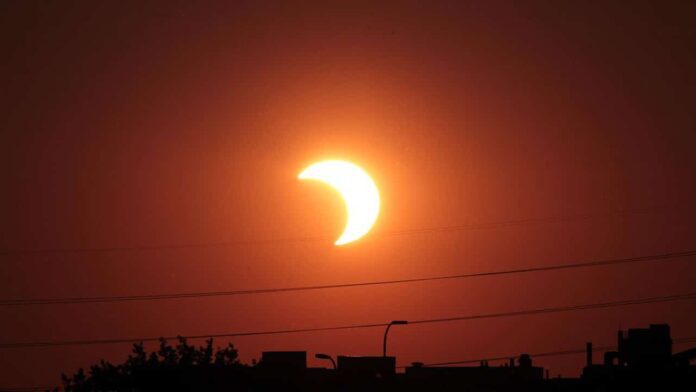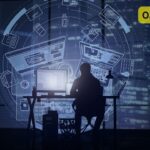Every year or two, the solar system aligns perfectly, with the moon throwing a shadow over a portion of the Earth’s surface and blocking out the sun—a solar eclipse. People from all over the country traveled to observe the “Great American Total Eclipse” in 2017, the first one visible in the continental states since 1979. North American eclipse chasers and citizen scientists are now preparing for the next big events: an annular eclipse on October 14, 2023, and a complete eclipse on April 8, 2024. This will be the final eclipse visible in the mainland United States until August 2045, a period of more than two decades.
People enjoy eclipses for the novelty of seeing the sun disappear during the day. However, these events are both showstoppers and opportunities: Radio JOVE, a group of radio astronomers and citizen scientists, is hoping to capitalize on the approaching eclipses for science as part of NASA’s “Helio Big Year.”
Radio JOVE “initially started as an education and outreach project to help students, teachers, and the general public get involved in science,” notes project co-founder Chuck Higgins, an astronomer at Middle Tennessee State University. The project has been in operation since the late 1990s, when it was established at NASA’s Goddard Space Flight Center. “We now focus on science and try to inspire people to become citizen scientists.”
Radio JOVE, as the name implies, was founded to focus on Jupiter, the Jovian planet. “Serendipitously, it turns out that the same radio wavelengths we use to observe Jupiter are also useful for observing the sun,” explains Thomas Ashcraft, a citizen scientist from New Mexico who has been observing using Radio JOVE since 2001. Following the 2017 Great American Eclipse, members grew more interested in heliophysics, or the study of the sun.
As energy from the sun flows to Earth, it interacts with the atmosphere; in particular, the sun’s rays generate an ionized layer known as the ionosphere. Any radio waves from the sun must travel through these particles above us. This layer is used by communication equipment, which bounces radio waves off it to traverse large distances.Additionally, you can also read about- Comet Nishimura: The Closest Comet to Earth in 400 Years?
The plasma in the ionosphere fluctuates dramatically between day and night. When the light shines on this layer, the particles combine to form ions. When the sun is not present, those ions relax. Similar shifts occur in the short term during eclipses, when most of the sun’s light is hidden. Radio JOVE intends to advance our understanding of the ionosphere by carefully measuring such fluctuations with a fleet of amateur observers.
To that end, Radio JOVE is providing modest radio receivers to citizen scientists across the country and training them to observe radio waves from Earth’s ionosphere. The organization provides some-assembly-required starter kits for roughly $200, and a staff of specialists and seasoned observers is on hand to assist new volunteers.
They’re currently preparing participants for a full day of observing during the annular eclipse in October. Members of the project are already collecting data to establish a baseline of the sun’s influence on a typical day, which they will compare to the approaching eclipse data. And this is just a taste of what’s to come: next year’s total eclipse. “The 2023 annular eclipse will be used as a training, learning, and testing experience in an effort to achieve the highest quality data for the 2024 total eclipse,” Higgins said in a conference summary for the American Geophysical Union.
Read More: Falcon 9 Mission: SpaceX Launches Rocket Packed With Starlink Satellites
Citizen science projects like Radio JOVE not only collect useful data, but they also bring a new audience into NASA’s scientific community. Anyone interested in science is welcome to participate, and if Radio JOVE does not appeal to you, NASA has a comprehensive list of additional opportunities. If you’re a ham radio operator, for example, you can join HamSCI, which is also planning to witness the forthcoming eclipse.
“NASA’s Radio JOVE Citizen Science Project allows me to further explore my lifelong interest in astronomy,” stated John Cox, a South Carolina-based Radio JOVE citizen scientist, in a NASA press release. “A whole new portion of the electromagnetic spectrum is now open to me.”


















![10 Countries With the Best Healthcare in the World [Statistical Analysis] Countries With the Best Healthcare in the World](https://articleify.com/wp-content/uploads/2025/07/Countries-With-the-Best-Healthcare-in-the-World-1-150x150.jpg)










